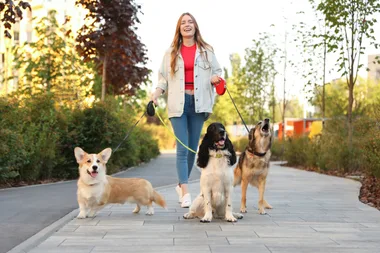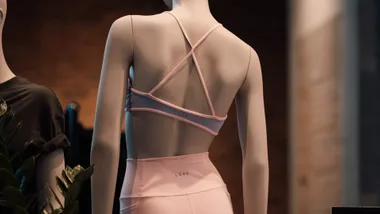By Annette Campbell
Sue Watt just thought she’d pulled a muscle in her back.
“I was getting a pram out of the car, when my back went ‘crack’,” recalls the now 34-year-old mother of two from Mt. Gambier, SA. “But it got worse from there and within a few weeks, I was in agony.”
Sue and her husband Tim’s first son, Lachlan, was only 10 days old when his mum felt this first pang of back pain. After several months of agony — and visits to doctors, naturopaths, chiropractors and physiotherapists to try to ease it — Sue finally went to hospital and demanded they take X-rays of her spine.
“I just said, ‘I’m not leaving until I have X-rays’,” Sue explains. “The doctor there kept telling me they’d show nothing, but I insisted.” And it was this determination which quite possibly saved her life.
The X-rays did in fact show that this otherwise fit, healthy 30-year-old had severe osteoporosis with what’s called “wedge” fractures throughout her spine.
“I must admit I was as blissfully ignorant of osteoporosis as most young women — I thought it was an old lady’s disease,” says Sue. “When I read the X-ray report and saw the word ‘osteoporosis’, I said to Tim, ‘Don’t you have to be old to have that?'”
The very next day Sue went to see a specialist at the Royal Adelaide Hospital. “He told me I might only have been a day away from not being here at all, because my own body weight was crushing my spine,” Sue says. “It could have given way at any time. My hair was falling out and I’d been losing weight. Basically my body was shutting down.”
Sue was admitted to the hospital, where she spent the next three weeks on a medication that helps kill the cells which break-down bone, while allowing the cells that re-build bone to work overtime. She was also on large doses of calcium and vitamin D, which helps calcium absorption.
“And I had to stop breast-feeding Lachlan right away,” she adds. “We don’t really know why I developed osteoporosis, although the breast-feeding seems to have triggered it, as the calcium was draining out of my bones to Lachlan. It probably would have developed anyway, but the breast-feeding seemed to have brought it on earlier.”
Because of the enormous stress a pregnancy could take on Sue’s fragile body, she and Tim were initially advised against having any more children.
“I’d breezed through the actual pregnancy with Lachlan and I started deteriorating after he’d been born,” Sue explains. “Because I’d been so sick though, I was told I’d never have any more children after Lachlan. But that’s like a red rag to a bull — me being told ‘No, you won’t!'”
Sue concentrated on building her bone strength by taking large doses of calcium, vitamin D, and doing regular weight-bearing exercise, mainly walking and weight training.
Finally her health and bone density improved to the point where she and her specialist were in agreement about trying for baby number two. And little Mitchell Watt is now 18-months-old!
“I had no problems at all through the pregnancy — though Mitchell was born by caesarean at 36 weeks, to prevent my back going through the pain of labour and delivery,” Sue says. “And this time I only breast-fed for 48 hours so he got the colostrum he needed.”
Sue is now determined to let younger women know that osteoporosis can happen … at any age.
“You can’t take your bones for granted,” she says. “And please, if you do think something is wrong, follow your instinct and have it checked.”
Bone-boosting tips from Osteoporosis Australia
- Get active. Do weight-training and weight-bearing exercise, eg, walking, lifting weights, tennis.
- Keep the calcium in your diet. Dairy foods are a great, rich and quick source of calcium. Three serves of dairy each day will give you your recommended daily intake of calcium.
- Get some sunshine. Vitamin D from sunlight is vital for adequate calcium absorption to ensure strong bones. Taking in some sunshine before 10am and after 3pm (in summer) is recommended — about five to 15 minutes, four to six times a week. Remember to wear your sunscreen between 10am and 3pm in those summer months.
- Stop smoking.
- Take the Osteoporosis Australia One-Minute Risk Test and speak to your doctor if you think you’re at risk.
- Reduce your alcohol and coffee intake (if it’s to excess!)
Osteoporosis Australia has loads of info about how to keep our bones healthy. Phone them on 1800 242 141 or visit their website:










